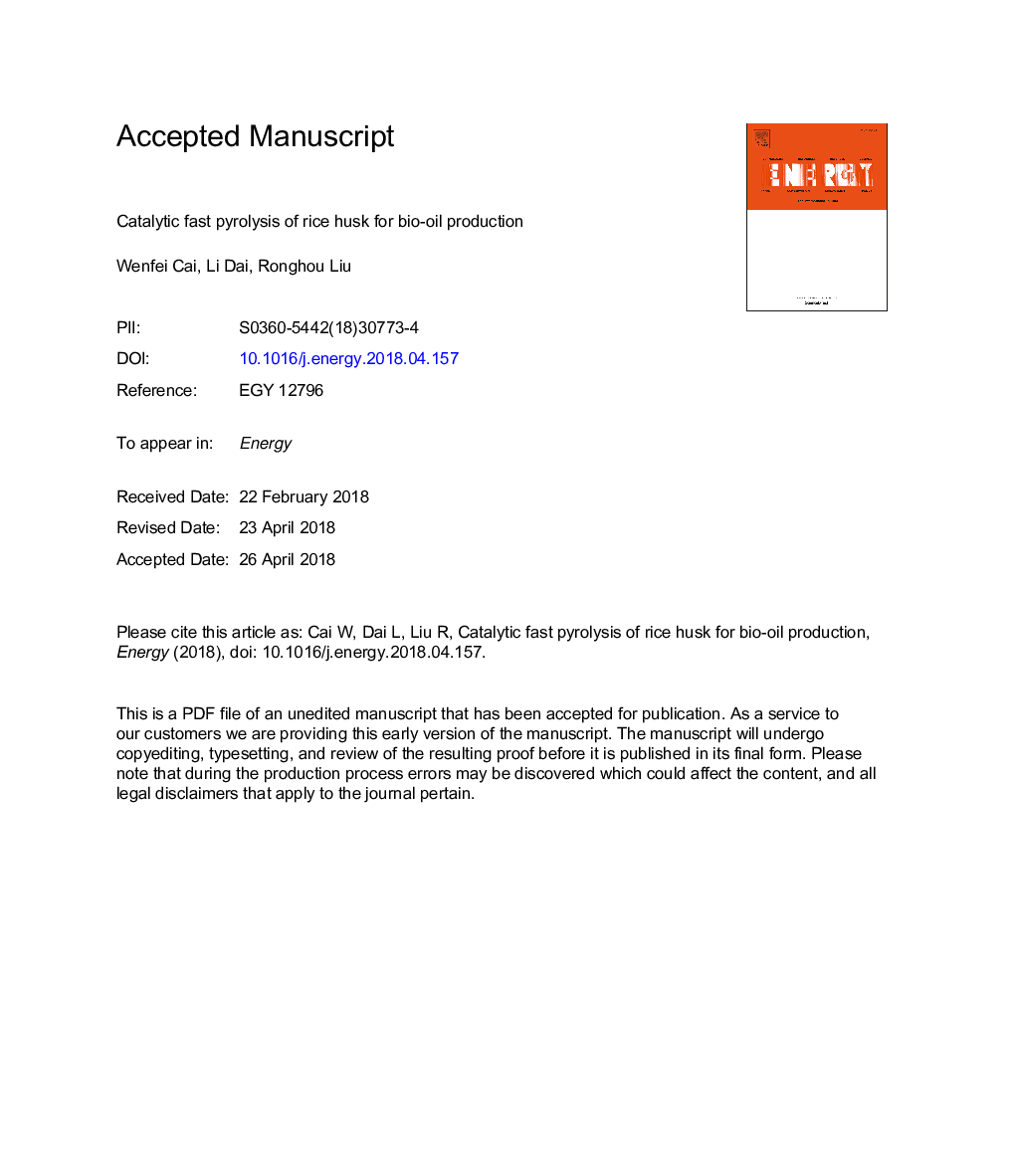| Article ID | Journal | Published Year | Pages | File Type |
|---|---|---|---|---|
| 8071479 | Energy | 2018 | 19 Pages |
Abstract
A lab-scale catalytic pyrolysis unit with the feeding rate of 100-500â¯gâ¯hâ1 was designed and manufactured with a fluidized bed reactor. The effects of reaction temperature, catalyst weight and catalyst position on the properties of pyrolysis products were investigated. Subsequently, the mechanism of biomass pyrolysis was studied through Py-GC/MS analysis. The optimal pyrolysis temperature for a higher yield and quality of bio-oil was 500â¯Â°C. The highest bio-oil yield was 46.9â¯wt% with biochar, and non-condensable gas yields of 30.0â¯wt% and 23.1â¯wt%, respectively at 500â¯Â°C. The minimum value of the water content of bio-oil samples was 13.39â¯Â±â¯0.22% under 500â¯Â°C. The catalyst can significantly increase the water content of bio-oil and reduce the ash content, HHV, solid content and viscosity of bio-oil. In the process of biomass fast pyrolysis, the cellulose, hemicellulose and lignin were pyrolyzed to monomers. Then some chemicals were produced from these monomers through a series of reactions: isomerization reaction, dehydration reaction, retro-aldol reaction, esterification, carbonyl reaction and so on. In catalytic pyrolysis, the active site of catalyst acts as deoxidizer. Hydrocarbon radicals' pool was formed through monomers thermal cracking. Then some relatively stable chemicals were formed through reactions among those radicals.
Related Topics
Physical Sciences and Engineering
Energy
Energy (General)
Authors
Wenfei Cai, Li Dai, Ronghou Liu,
